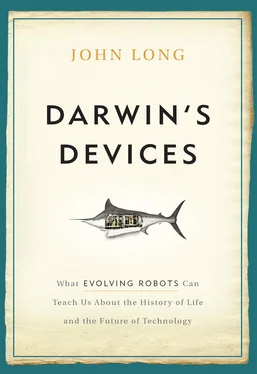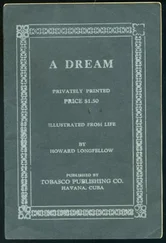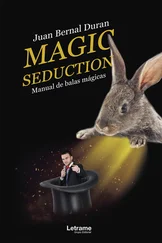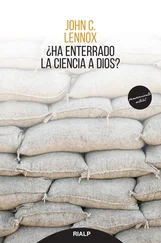J. Lindgren, M. W. Caldwell, T. Konishi, and L. M. Chiappe, “Convergent Evolution in Aquatic Tetrapods: Insights from an Exceptional Fossil Mosasaur,” PLoS One 5, no. 8 (2010): e11998, doi:10.1371/journal.pone.0011998.
Start here with two of Frank’s papers: “Transitions from Drag-Based to Lift-Based Propulsion in Mammalian Aquatic Swimming,” American Zoologist 36, no. 5 (1996): 628–641, and “Biomechanical Perspective on the Origin of Cetacean Flukes,” in The Emergence of Whales: Evolutionary Patterns in the Origin of Cetacea , edited by J. G. M. Thewissen, 303–324 (New York: Plenum Press, 1998).
These flippers, or Nektors, are themselves biologically inspired. Charles Pell, working with a graduate student at Duke University in the BioDesign Studio that he and Professor Steve Wainwright created, noticed that a fish-like piece of rubber, mounted on a stick, would generate thrust if you wiggled the stick between your fingers, rolling the stick between thumb and forefinger, with the fish in the water. Pell, then-student-of-mine Matt McHenry, and I used Nektors as model representations of blue-gill sunfish to analyze swimming propulsion: M. J. McHenry, C. A. Pell, and J. H. Long Jr., “Mechanical Control of Swimming Speed: Stiffness and Axial Wave Form in an Undulatory Fish Model,” Journal of Experimental Biology 198 (1995): 2293–2305. Pell and Wainwright patented the Nektor system: C. A. Pell, and S. A. Wainwright, “Swimming Aquatic Creature Simulator,” US Patent 6179683, issued January 30, 2001, assigned to Nekton Technologies, Inc. (now the marine division of iRobot, Inc.).
Tellingly, petit madeleines are modeled after scallops! If you buy madeleine pans, you’ll notice right away the fluted and streamlined depressions into which you pour the batter. What’s cool about scallops is that they are bivalves, mollusks with two shells, that actually swim. So here we have a swimming scallop that is the model for a streamlined pastry that is the inspiration of the name of a swimming and streamlined biorobot. Does it get any more fun?
Forgive the engineer-speak about to issue forth. Maddie’s flippers, or Nektors, are single-degree-of-freedom actuators. A shaft colinear with a rotary motor moves the flipper, the compliant material forming the shape and bulk of the appendage, which is molded around the shaft at a specified angular velocity. The flipper is oriented so that its leading edge rotates in pitch. That pitch rotation flaps the flipper and transfers angular momentum to the surrounding water. When the pitch rotation is reciprocated such that the direction of the angular velocity alters regularly, as with a sine function, then the momentum transferred from the flipper to the water can be focused as a jet. This jet, in turn, produces a net thrust, via Newton’s third law, on the oscillating flipper.
The coaches of Vassar’s swim teams, Lisl Prater-Lee, Tom Albright, and Jesup Szatkowski, were kind enough to allow Robot Madeleine both training and experiment time in the pool.
You can find all of the details of this set of experiments in the following paper: J. H. Long Jr., J. Schumacher, N. Livingston, and M. Kemp, “Four Flippers or Two? Tetrapodal Swimming with an Aquatic Robot,” Bioinspiration & Biomimetics (Institute of Physics) 1 (2006): 20–29. We first introduced Robot Madeleine here: M. Kemp, B. Hobson, and J. H. Long Jr., “Madeleine: An Agile AUV Propelled by Flexible Fins,” in Proceedings of the 14th International Symposium on Unmanned Untethered Submersible Technology (UUST) , Autonomous Undersea Systems Institute, Lee, NH, 2005.
F. E. Fish, J. Hurle, and D. P. Costa, “Maneuverability by the Sea Lion Zalophus californianus : Turning Performance of an Unstable Body Design,” The Journal of Experimental Biology 206, pt. 4 (February 2003): 667–674.
Predator X is the stage name of a heretofore undescribed species of pliosaur unearthed in the Norwegian Arctic. The History Channel aired an eponymous special on Predator X, and clips of the documentary are available at www.history.com/videos/predator-x-revealed#predator-x-revealed. Robot Madeleine, by the way, was featured!
The accelerations of twenty-two-meter-to twenty-seven-meter-long blue whales have been measured in the wild: J. A. Goldbogen, J. Calambodkidis, E. Oleson, J. Potvin, N. D. Pyenson, G. Schorr, and R. E. Shadwick, “Mechanics, Hydrodynamics and Energetics of Blue Whale Lunge Feeding: Efficiency Dependence on Krill Density,” The Journal of Experimental Biology 214, no. 1 (2011): 131–146.
Robot Madeleine, like Tadro, has had multiple versions. Maddie 1.0 was self-propelled and controlled remotely by a human operator. Maddie 2.0 had all the on-board sensors, like the power monitor and the accelerometer, allowing her to collect data on herself. Maddie 2.0 was the version that I’ve talked about here and about which we’ve published our papers. Maddie 3.0 was programmed by Mathieu Kemp to be fully autonomous, employing a two-layer subsumption hierarchy (see Chapter 5) in which she selected a random depth and compass heading and then moved along that course until she either detected an object with her sonar or ran out of time (thirty seconds). Maddie 3.0 was destroyed, unfortunately, when we were filming her for the documentary Predator X ; she sprung a leak and fried her electronics. Since then we have been trying to rebuild her as Maddie 4.0 at Vassar; however, at the moment we lack the funding to finish that job.
You can see Transphibians at the iRobot website: www.irobot.com/gi/maritime/Transphibian/.
B. W. Hobson, M. Kemp, R. Moody, C. A. Pell, and F. Vosburgh, “Amphibious Robot Devices and Related Methods,” US Patent 6,974,356, 2005.
Broadcast date of August 9, 2006.
Auke Jan Ijspeert, Alessandro Crespi, Dimitri Ryczko, and Jean-Marie Cabelguen, “From Swimming to Walking: Is a Salamander Robot Driven by a Spinal Cord Model?” Science 315, no. 5817 (2007): 1416–1420.
You can read more about MARMT in J. H. Long Jr., N. Krenitsky, S. Roberts, J. Hirokawa, J. de Leeuw, and M. E. Porter, “Testing Biomimetic Structures in Bioinspired Robots: How Vertebrae Control the Stiffness of the Body and the Behavior of Fish-like Swimmers,” Integrative and Comparative Biology 51, no. 1 (2011): 158–175, doi:10.1093/icb/icr020.
Where would we be without Douglas Adams? This chapter title is an homage to the fourth book in his Hitchhiker’s Guide to the Galaxy series, So Long, and Thanks for All the Fish (New York: Harmony Books, 1985).
Here’s MHI’s original press release: www.mhi.co.jp/en/news/sec1/e_0898.html.
You can learn more about this company’s plans at www.robotswim.com.
Reported by the Huffington Post , July 16, 2010, based on a Reuters video posted July 15, 2010. Or, better yet, visit Dr. Porfiri’s web page for the real scoop: \faculty.poly.edu/~mporfiri/index.htm.
Full disclosure here: I have been and currently am collaborating with Farshad and FarCo Technologies. However, I hold no financial stake in FarCo Technologies (www.farcotech.com/).
Читать дальше












